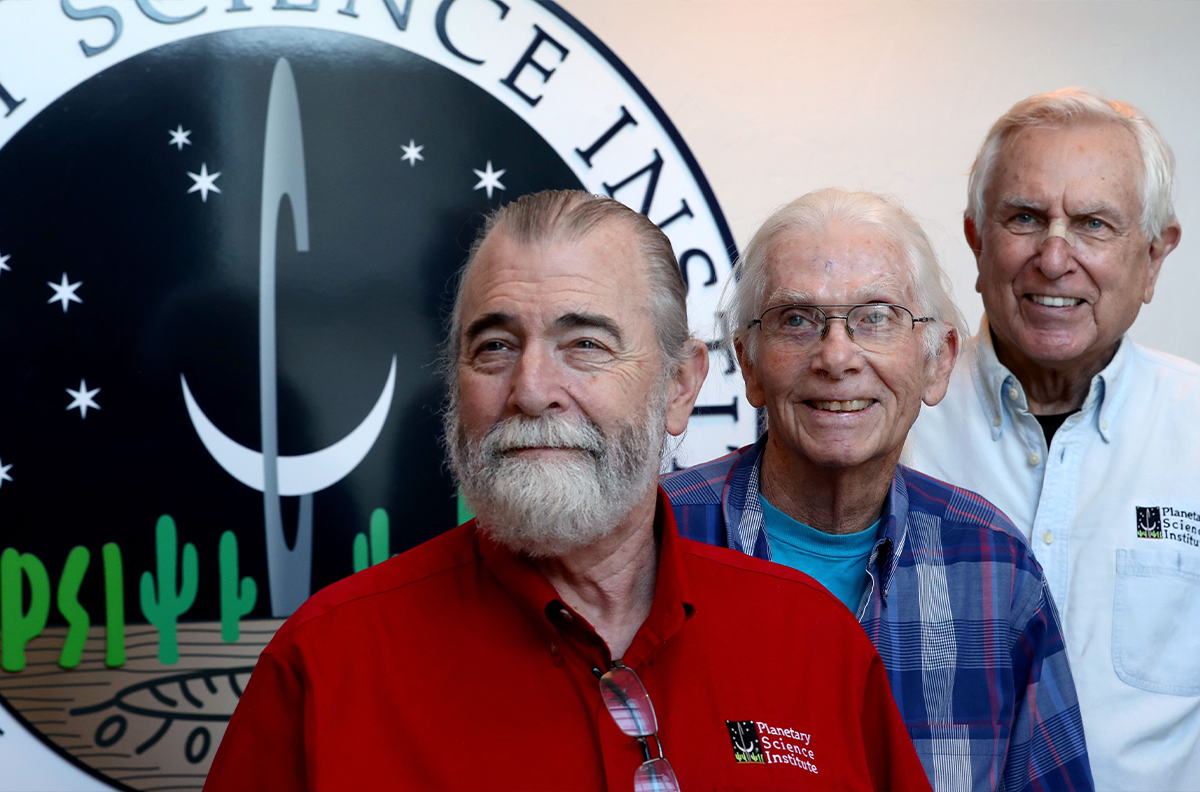
Planetary Science Institute Celebrates 50 Years
When a handful of Tucson scientists joined together in 1972 to explore the solar system, they had no idea their efforts would result in the present-day Planetary Science Institute.
PSI, celebrating its 50th anniversary Feb. 2, has grown to be one of the largest planetary science organizations, with more than 160 employees – including 115 Ph.D. scientists – more than 300 current NASA space exploration contracts and more than $15 million in annual revenue, with 95% of funding coming from NASA.
“In the early days of PSI, we did not want to grow to be a large group. Our aim was quality, not quantity,” said Don Davis, PSI founder and Senior Scientist Emeritus. “We sought, and I think achieved, our aim of having a high-quality staff of planetary scientists with overlapping scientific interests who could work both independently and collaboratively on challenging problems in planetary science.”
“The founders of PSI were a group of like-minded University of Arizona graduates who were hired to form a Tucson division of Science Applications International Corporation, devoted to the then-emerging field of space exploration, and who named themselves ‘Planetary Science Institute’ in early February of 1972, with Groundhog Day being the official date for formation,” said William Hartmann, PSI founder and Senior Scientist Emeritus.
A group of young planetary scientists, including Hartmann, Davis, Stu Weidenschilling, Clark Chapman, Mike Price and Al Binder, came together to form the early nucleus of the new PSI.
Early PSI headquarters were based in Hartmann’s living room. After outgrowing a number of sites, the institute, a private, nonprofit 501(c)(3) corporation, is now headquartered at a suite of offices in central Tucson with a second office near Denver and scientists distributed in 30 states, the District of Columbia and 10 countries.
PSI has been a pioneer in using the Internet to create a distributed workforce, while at the same time building a supportive, collaborative community. “Our scientists bring experience covering almost all of the solar system missions of the United States, as well as those of other countries. Their shared experiences energize an expansive vision of future exploration in our own Solar System and beyond,” said Mark Sykes, PSI CEO and Senior Scientist. “I also deeply appreciate the unmatched experience and dedication of our staff in supporting our scientists and educators.”
PSI scientists have defined the modern theory of the origin of the Moon, proposed the rubble pile structure for many asteroids, developed a method for determining the ages of planetary surfaces from craters that have stood up over time, identified evidence for tsunamis over the shores of Mars’ early polar ocean, identified potential locations of Mars life today, determined the locations of potential caches of water ice in the daylit regions of the Moon of value to future human activity, constrained the magnetic fields of planets around other stars, and explored the environments associated with the earliest stages of planet formation around other stars, among many other accomplishments.
PSI scientists and educators have also been pioneers in engaging the public in citizen science and integrating real science experiences with the programs of faith communities.
“PSI would not exist without the support of the public, and we are committed to sharing what we learn with them,” Sykes said. “Our science takes many models developed for our world, and tests them in literally alien contexts. This helps us to better understand our own planet and the threats it is facing today.”
Events honoring PSI’s anniversary have been sidelined by COVID-19 surges, but are now being targeted for later in the year.





